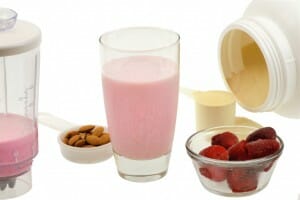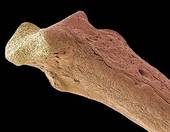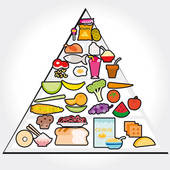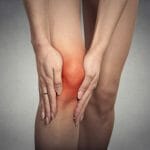We are great believers in supplements. When we get to our middle and old age, it makes sense to add a bit to boost our health. Doctors are quick to recommend that, as we get older, our bones get brittle and we need more calcium. So, we get it from food, and then we get it from supplements, and we often get too much of it, especially if we are eating healthy, balanced meals. We already know that too much calcium causes constipation, and affects our body’s ability to absorb zinc and iron. It also increases our risk of kidney stones. But, scientists found that too much calcium can also highly increase our risk of stroke and heart disease. Since more than 60 percents of American women, those that are middle-aged and older, are taking calcium supplements, this means that quite large proportion of our women are putting their health and lives at unnecessary risk.
Why do we need calcium?
Calcium is necessary for the healthy functioning of our bodies. We need it to grow, and maintain, strong and healthy bones and teeth. We also need it to enable our muscles to move, and for nerves to transmit the message between our body parts and the brain. Calcium is necessary for our blood vessels to transport blood and distribute enzymes and hormones throughout our body.
Babies need very little calcium – 200-260 mg until they are three years old. Older children, from four to eight, need 1000 mg and 1300 mg until they are 18. After that, when the growing is done, people need 1000 mg until they reach 50, if they are women, or 70, if they are men. Women need a bit more – 1200 mg in their middle and old age, and this is what men need after they get to their 70s.
Getting all the calcium we need from food is not difficult. Milk and milk products such as yogurt and cheese are the main sources of calcium from food. Broccoli, kale and Chinese cabbage are also excellent sources of calcium.
Calcium is also added to many food items, such as breakfast cereals, juices, soy and rice drinks and tofu. Keep in mind that this calcium comes under the title ‘supplements’, since it is not natural calcium.
The problem is in supplements
It is almost impossible to get too much calcium from food, even if you are crazy about milk and cheese, and even if you do, it will not hurt you seriously. What scientists are worried about is the calcium we are getting from supplements.
A group of Swedish researchers from Uppsala University studied 61,443 Swedish women for an average of 19 years. They collected data on their diet and the use of supplements, and combined that information with the Swedish Cause of Death Registry.
Results showed that the highest death rates of cardiovascular, heart disease and all-cause were among women who took more than 1400mg calcium a day. The death rates were two times higher than among women who took less than 1400 mg of calcium a day. The death rates were also higher among women who took less than 600 mg per day. One explanation was that too much or too little calcium disrupts normal homeostatic control, resulting in changes in the level of calcium in blood.
Since calcium supplements are normally recommended to older women to prevent bone fractures, researchers recommended that supplements should be advised only if women are not taking enough calcium from food, not to everyone regardless of their nutrition.
While Swedish study investigated only the results of calcium intake among women, another study conducted by researchers from the National Cancer Institute, Bethesda, Md. found the same results in men who are taking calcium supplements. Interestingly, this study did not find that supplemental calcium affects women the same way.
Are we eating enough calcium?
As we grow older, our system does not absorb calcium as efficiently as when we are younger. Not having enough calcium in our nutrition also affects our intake of vitamin D. Some foods, such as those rich in oxalic acid (beans and certain vegetables) and in phytic acid (whole grains) affect how we absorb calcium. So, we need to take more than when we were younger.
One problem with calcium is that its best source is milk, and many people, particularly as they age, become lactose-intolerant. Fortunately, there are lactose-free milks widely available, and if they are also fat-free, they provide all the calcium we need without unpleasant consequences. Just keep in mind that one glass of milk has about 300mg of calcium.
Besides milk and milk products, there are many other sources of calcium. Sardines, soybeans, dark leafy greens such as spinach, turnips, collard greens and kale are not only rich in calcium but also in a range of other important nutrients. Here is what National Institutes of Health suggests we should eat to reach our calcium goal:
1 cup of kale contains 90 mg of calcium.
1 orange contains 60 mg
1 can of sardines 325 mg.
1 small packet of oatmeal has 105 mg
1 ounce of sesame seeds has 280 mg
1 ounce of Swiss cheese has 280 mg
1 spoonful of parmesan cheese has 70 mg
1 ounce of almonds has 80 mg
The calcium story is familiar: instead of getting our nutrients from balanced, versatile nutrition that includes all sorts of different foods, we eat prepackaged ” Ëœfood products” ™ or fast foods, and then hope to cover the gap with vitamin or mineral supplements. We should not need scientists to tell us that vitamins and minerals from supplements are not the same as when they come from foods. Not to mention that they do not taste the same either. With a bit of planning, we can have delicious meals every day, and enjoy every bite, while getting not only all the calcium we need to keep our bones from breaking, but keeping healthy weight, strong heart and high energy level, regardless of our age.










